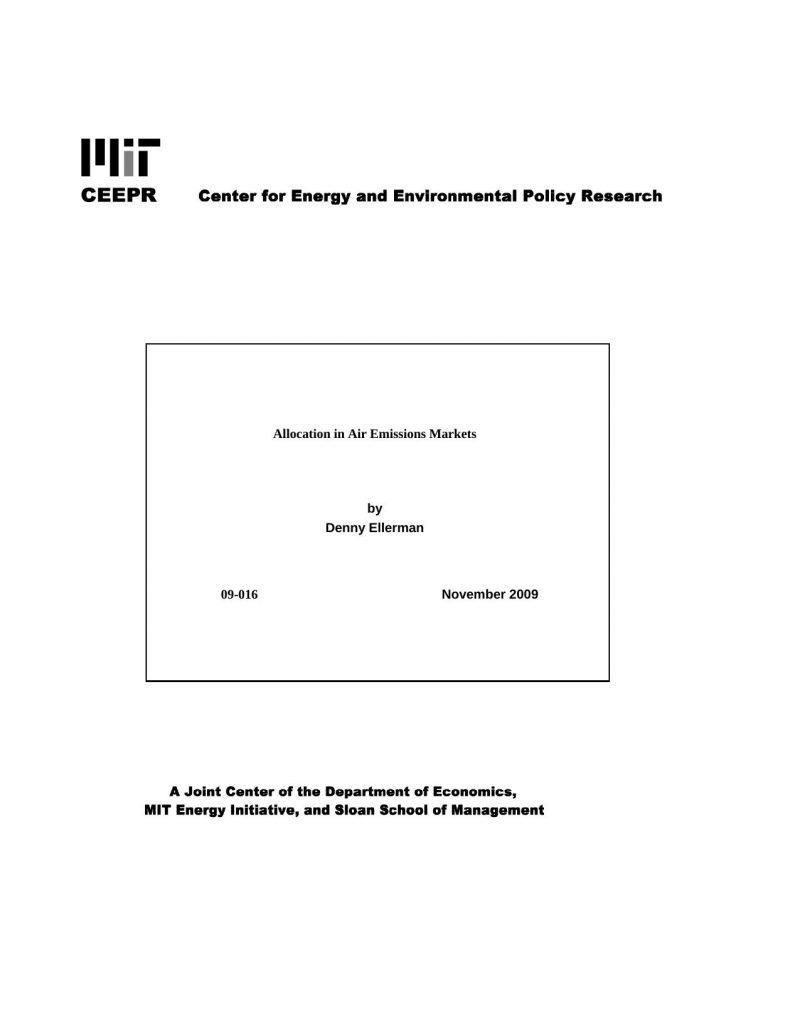Allocation in Air Emissions Markets
Denny Ellerman
09-Nov
The past two decades have witnessed the increasing use of a new form of environmental regulation, cap-and-trade, that consists of creating limited property rights in emissions, known as allowances, and organizing a market for their exchange. Public policy attention has been directed principally to the two features emphasized by the catchy label, that is, the cap—the limit on aggregate emissions—and trading—the flexibility and least-cost properties associated with this instrument. Until recently, relatively little interest has been directed to the creation and distribution of the property rights, more commonly known as allocation, which is the essential mechanism by which cap-and-trade systems operate.
This paper focuses specifically on allocation in the spirit of Libecap’s Contracting for Property Rights (1989). A central theme in Libecap (1989) is that the creation of property rights in common pool resources is a response to the losses being incurred through overuse on the part of those benefiting from open access. This paper argues that air emissions markets are different from other common pool resource problems and that this difference explains the evolution in the assignment of property rights that can be observed from the early US programs, through the EU ETS, to the current debate in the US concerning a cap-and-trade program for greenhouse gas emissions.



